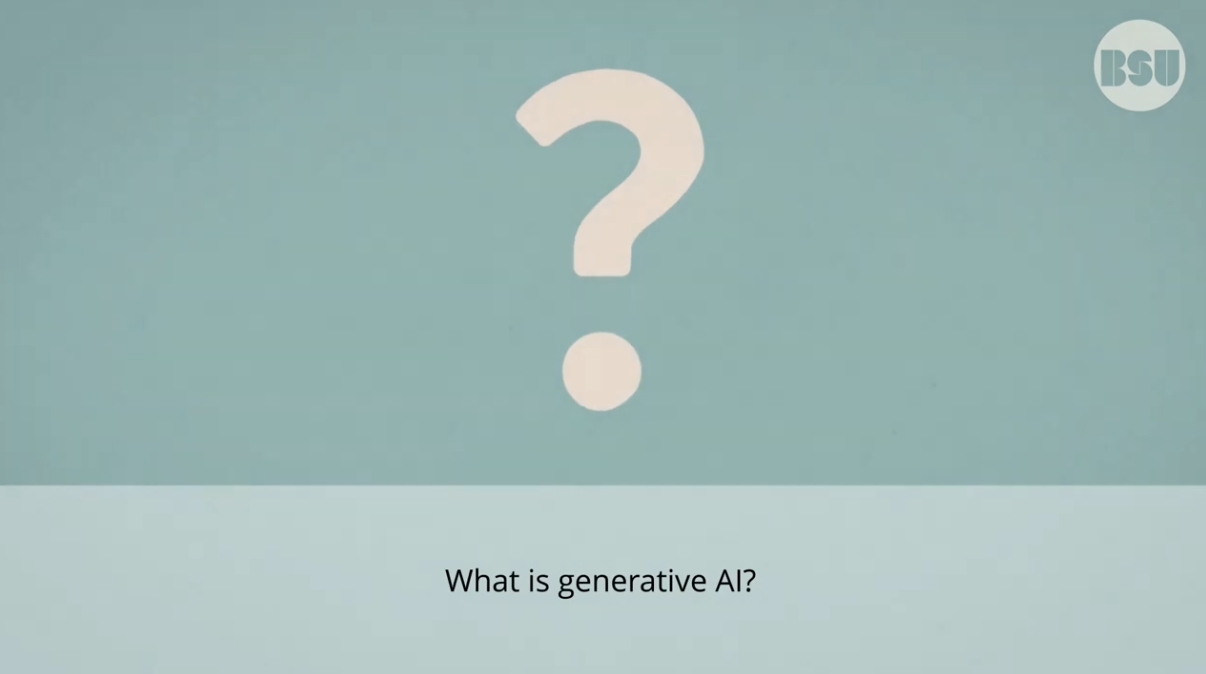
What is Artificial Intelligence?
AI (Artificial Intelligence) is a field of computer science that aims to replicate human cognitive functions using computing processes. At present, it usually refers to the use of a form of Generative AI.
What is Generative AI (GenAI)?
Generative AI refers to the broad subset of artificial intelligence, specifically that which can complete tasks that normally require human cognition. It can be used to create ‘new’ content in a wide range of applications such as text, images, audio, code, and more.
AI has been around for decades, but the recent surge in popularity is largely attributed to the 2017 paper from Google researches titled “Attention Is All You Need”, and the model introduced by this paper became the main component of modern large language models, which along with deep learning neural networks caused an AI boom which lead to generative AI (amongst other advancements).
AI uses a variety of techniques and approaches, including Machine learning, Neural networks and Natural language processing.
Importantly, what we call ‘artificial Intelligence’ generally refers to specific tools that perform specific tasks; artificial general intelligence refers to a system that can perform any intellectual task that a human can, and it does not yet exist.
Large Language Models (LLMs)
History
LLMs have been around for decades, but the concepts go way back to Semantics (the study of language and its usage) and Natural Language Processing (the process of translating the language used by humans into the language used by computers and back again).
Jumping forward, the creation of ELIZA in the 60s - considered to be one of the first ‘chatbots’ - provided a foundation of sorts for more complex LLMs in the future.
There's a lot in between, but in 2017 arrived the transformer model, aka Generative Pre-trained Transformer (GPT), and marked a turning point where models could begin generating “new” content. From then onwards, the models have grown, enabling things like understanding of context and thus adapting to needs, and so on.
As of 2024, the largest, most capable models are all based on the transformer architecture.
How do they work
LLMs are trained on a gargantuan amount of data, which helps them to learn the semantics of human language.
Words are assigned a numerical sequence which are then represented in a sort of imaginary ‘word space’ with thousands of dimensions, where similar words are placed near one another. ‘Boat’ may be closed near ‘sail’, ‘ocean’ and ‘vehicle’.
In steps the transformer, which helps the model understand the context of the input by assigning attention to different parts of the text.
Next is the prediction, where the model makes an educated guess as to the next word in a sentence based on previous words while ensuring contextual and grammatical accuracy.
Finally is the tuning, where the model can be refined to be better at specific tasks.
Cautions and Ethical Considerations
Generative AI has a lot of potential, but it's extremely important that we consider and understand the ethical implications and risks associated with it, including copyright, climate, bias, inaccuracy and hallucinations, and privacy.
AI use and copyright
You must ensure one of these conditions applies:
- You have consent from the owner
- The content is no longer under copyright
- The copyright holder of the content/text/image has explicitly licensed the use of their material by AI tools, to the extent to which you intend to use their material (e.g. commercially or non-commercially, for standalone analysis or for training large language models)
If you are not sure the content, text or image is under copyright you must assume it is.
Climate impact
“The next wave of generative AI systems will consume vastly more power than expected, and that energy systems will struggle to cope”
AI doesn't run in a vacuum - computations are conducted in large data centres that consume vast quantities of resources.
What can we do?
- Avoid using AI ‘just for fun’
- Be mindful
- Be thoughtful with your prompts to reduce iterations
Key Facts
- One assessment suggests ChatGPT consumes the energy of 33,000 homes
- Estimates suggest an AI-driven search consumes 4-5x as much energy as a normal web search
- By 2027, demand for water for cooling AI computational activities could be 50% of the entirety of the UK's water usage
- Google and Microsoft's environmental reports showed that their water usage rose by 20% and 34% respectively while working on their AI projects
Bias
“Unfair or prejudiced outcomes produced by algorithms due to flawed data or design.”
AI models can reflect the biases present in their training data. Be cautious of outputs that may perpetuate stereotypes or unfair assumptions. It is essential to review and edit AI-generated content to ensure fairness and accuracy.
Inaccuracy
“Production of incorrect or misleading results.”
Generative AI models can produce plausible but incorrect or misleading information. Always verify the facts, especially if the content will be used in decision-making processes.
Hallucinations
“When a model generates incorrect or misleading information that isn't based on its training data.”
AI models sometimes generate content that is nonsensical or unrelated to the input prompt. Recognize these "hallucinations" and disregard or correct them.

This is a screenshot from a video created by Sora showing the famous Glenfinnan Viaduct but with an extra train track that is not there in reality. The train resembles 'The Jacobite', but it has an extra chimney that should not be there.

For comparison, a real image of The Jacobite crossing the Glenfinnan Viaduct.
Ethical Use
"Fairness, transparency, privacy, and accountability in its deployment and development.”
Ensure that AI-generated content is used ethically. Avoid generating harmful, misleading, or malicious content. Respect copyright laws and attribute sources where necessary.
Privacy and Data Security
“Ensures sensitive and/or personal data is protected.”
Be mindful of the data you input into AI systems, especially sensitive or personal information. Use tools that adhere to robust privacy and data security standards.
Further reading
Here are some relevant articles on the topics we've covered in this section:
- Generative AI’s environmental costs are soaring — and mostly secret (Nature.com)
- UNESCO finds ‘pervasive’ gender bias in generative AI tools (CIO.co.uk)
- Two US lawyers fined for submitting fake court citations from ChatGPT (The Guardian)
- The terrifying march of AI-fuelled fake news benefits Musk and Trump (inews)
- AI and cyber security: what you need to know (National Cyber Security Centre)
